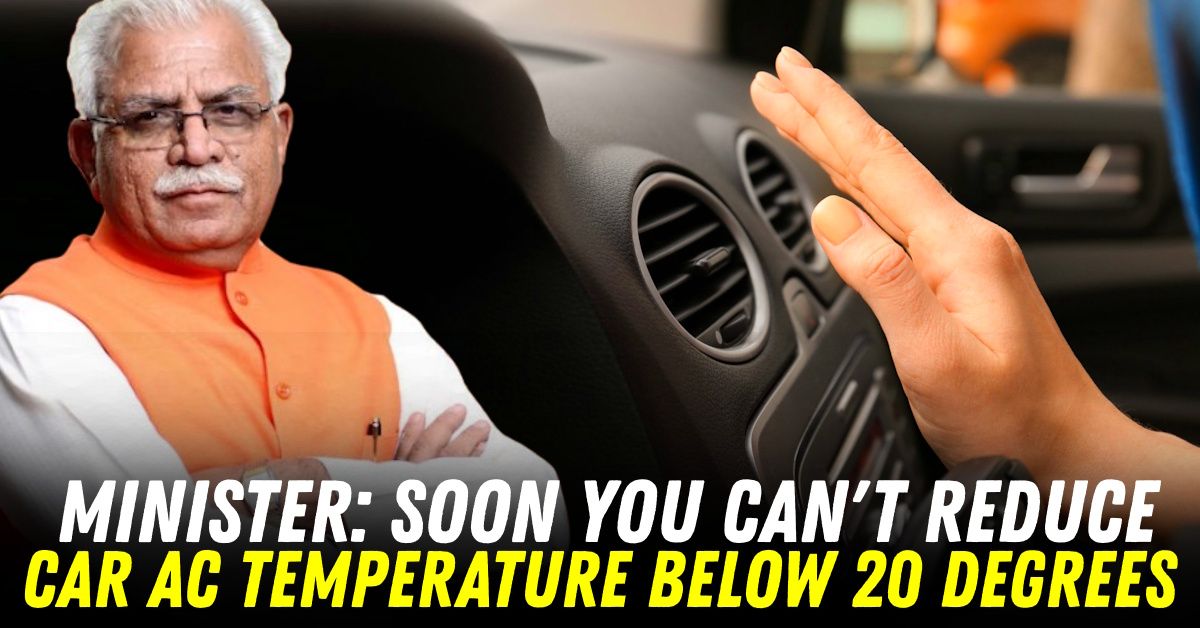Soon You Will Not Be Able To Lower Your Car's AC Temperature Below 20 Degrees: Here's Why


The Indian government is mulling over introducing a new rule/ regulation that could upset many. If it comes to effect, we won't be able to set our air conditioning (AC) temperatures below 20 degrees or above 28 degrees. The move is part of a larger effort to reduce electricity consumption in our country. Weirdly though, this decision might not be limited to homes and offices alone. Reports say that cars and SUVs will also have to adhere to it...
The new setting will standardise the temperature (cooling) range for air conditioning systems. The lower limit would be 20 degrees and the upper limit would be 28 degrees. The Union Minister of Power, Manohar Lal Khattar recently let out details of the proposed rule in an event in Delhi.
“Regarding air conditioning standards, a new provision is being implemented soon. The temperature standardization for ACs will be set between 20°C to 28°C, meaning we won't be able to cool below 20°C or warm above 28°C. This is a first-of-its-kind experiment, aiming to standardize temperature settings,” said the minister.
The rule will stay valid even in peak summer, and during heatwaves. The government intends to reduce the country's power consumption, and in the larger picture, prevent outages and scarcities. An air conditioning system consumes a lot of power when it cools below 20 degrees, thereby putting added pressure on the power grid. According to top government officials, AC systems account for over 50 gigawatts of power consumption- roughly one-fifth of the entire country's max power load.
India is expected to have around 100 million ACs, and the proposed rule is expected to bring big savings. The Bureau of Energy Efficiency (BEE) mandate 2020 states that all room and car AC systems must have their default temperates set at 24 degrees- which is considered a sweet spot between cooling and energy efficiency.
Honestly, none! Or more realistically, limited! With the 20 degree rule in place, AC system on your car will not be able to cool below 20 degrees. Most cars and SUVs now offer cooling up to 16 degrees and even have a Low mode below it. When the occupants opt for aggressive cooling, the fuel consumption increases in case of petrol/diesel vehicles. The new rule can thus save fuel to some extent- in other words, it can increase the real-world mileage of our vehicles.
Another possible advantage is that the standardisation could increase the lifetime of your car's AC system, by limiting the load and use of refrigerant. Both the fuel savings and AC health benefits could be marginally rewarding though.
The regulation could prove to be more significant on electric vehicles though. A stronger cooling often drains the EV's battery faster, lowering the usable range. Under the new rule, these could consume less energy and thus deliver better range for the same battery and motor specifications. This would in the larger picture, mean that people charge them fewer number of times- something that would reduce the load on the main power grid.
While implementing the new rule on all private vehicles can be annoying to many, especially in India's peak summers, the government could think implementing it in public transport, workspaces and public spaces rather than encroaching on private spaces.